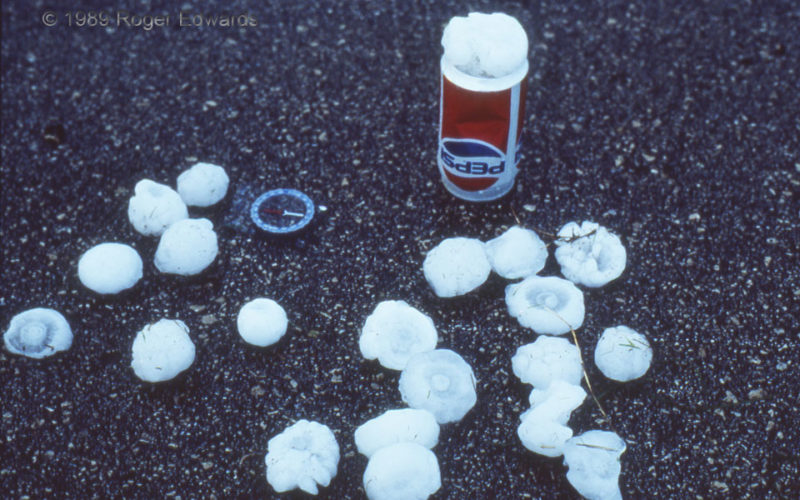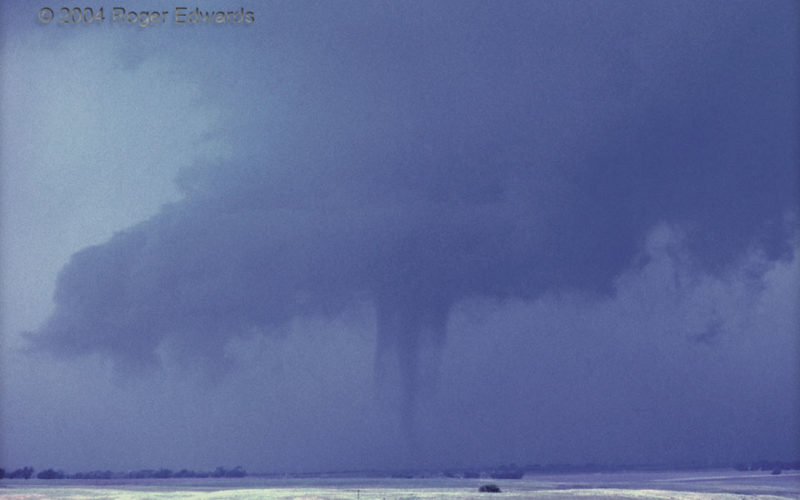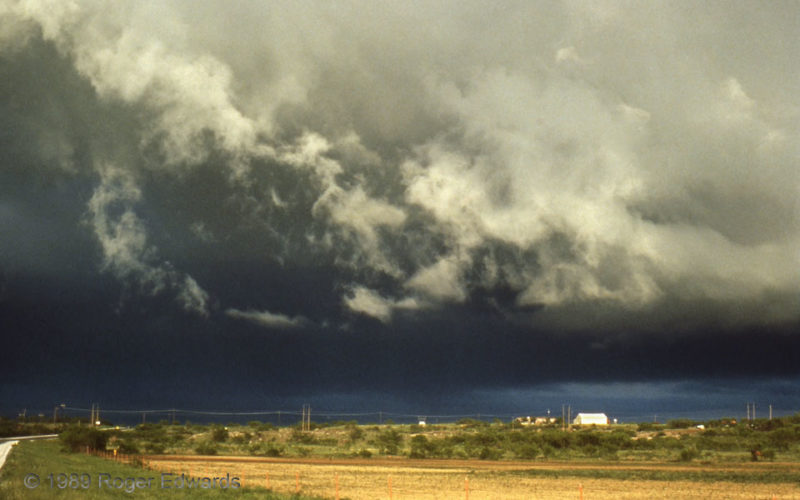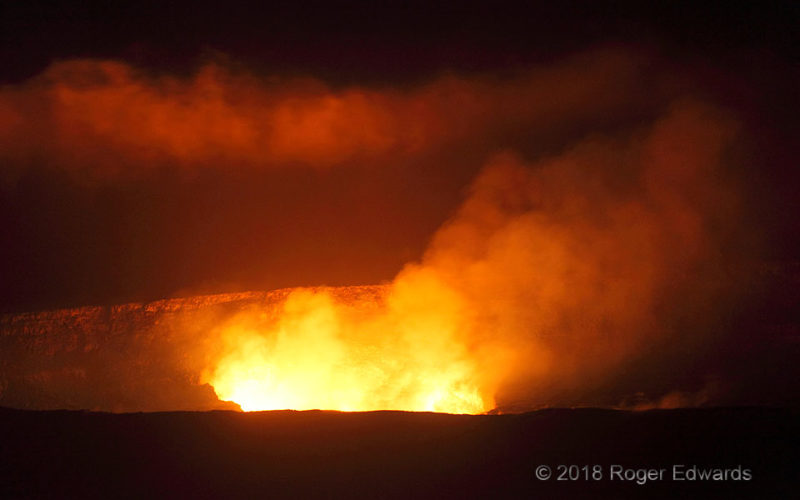An assortment of hailstone sizes and shapes, as well as internal structures, could be gathered quickly from adjoining grass, immediately following the passage of a rain-wrapped, embedded supercell at this location. Unlike the pavement upon which the hail sits, the grass insulated the hail to some extent, slowing the melting process. Concentric rings of different opacities reveal growth layers as … [Read more...]
Booming across the Borderlands
While following storms and their outflow boundaries in anticipation of some sunset-hour lightning, why not shoot the day lightning too? That was my mindset here, as some cells fired over outflow from earlier mountain storms to my east, created a charged atmosphere, then started sparking profusely themselves. The earth to the west, all the way into the next mountain range and not far north of the … [Read more...]
Deuel Vortex
Concentric tubes—inner and outer vortex components—are evident in this film slide of a tornado from Deuel County of the southeastern Nebraska Panhandle. If viewed in a cross-section, or a mobile Doppler radar image, it may have looked like two concentric rings with a "moat" or annulus between. This idea is much like the eyewall replacement cycle of a hurricane, and actually, that's how this … [Read more...]
Fractocumulus a.k.a. Scud
Sunlit fractocumulus made a stark contrast with the dark cloud base, under the flanking line of a supercell in the background. Cumuliform cloud material often gets shredded into ragged chunks in high-shear surroundings like that of a supercell and its turbulent rear-flank outflow pool. "Scud" is a popular term, coined by storm observers for decades, for shredded cloud material (fractus) of all … [Read more...]
Cumulus Congestus
This was part of a very strange storm: a south-southwestward right-moving member of a supercell split, in northwesterly mean flow, with two rear flanks, and splitting for a second time at the time of the photo. It was a fascinating process to witness! A large amount of rusty dust was being entrained in the updraft, thus the reddish tinge in the lower middle. The balcony of convection in the … [Read more...]
Night Heat
Six nights after one early nocturnal visit to Kilauea's Halemaumau crater, competing for space with other onlookers and photographers, we returned for more, with fewer people. Later, after midnight local time, it was just us and the volcano for short spells, with occasional hissing and gurgling noises evident despite the distance of nearly a mile (made to look shorter by employing a deep zoom). … [Read more...]
- « Previous Page
- 1
- …
- 122
- 123
- 124
- 125
- 126
- …
- 386
- Next Page »





